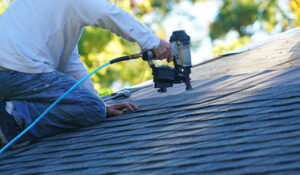To maximize ROI, pest control companies should implement effective marketing strategies. These strategies can help them stand out from the competition, attract loyal customers, and propel their business to buzzing success.
Online marketing strategies include Search Engine Optimization (SEO), creating and optimizing a website, and targeted advertising. Pest Control Advertising is especially helpful for attracting potential leads who are searching for pest control services in their area.

Pay-per-click (PPC) Advertising
A PPC campaign allows your pest control company to be the first result when potential customers search for your services on Google. You only pay for the ad when a user clicks on it, so you can easily measure your ROI. You can also target ads to specific demographics, so your pest control company only pays for the results you want.
Using SEO to optimize your website and content will help you rank high in organic search results. This will provide a low-cost way to attract more visitors and increase your sales. However, you must be patient as this marketing strategy takes some time to produce results.
Local SEO is another way to improve your online visibility and boost sales. This is the process of optimizing your website for search queries that are relevant to your geographical area, such as “pest control near me.” This method is particularly effective for small businesses because it allows you to compete against national and local competitors.
The best digital marketing agency will develop customized strategies that align with your business goals and maximize your return on investment. They will understand your unique niche and provide comprehensive digital marketing services, including web design, SEO optimization, and PPC advertising. These strategies will be designed to help your pest control company stand out from its competitors and build a loyal customer base. They will also help you track your performance and make adjustments when necessary.
Sponsor Local Sports Teams
Despite all the digital marketing that exists today, it’s still important to use traditional marketing methods to promote your pest control business. These methods can help you stand out from your competitors and generate more leads. These marketing ideas can include local sponsorships, billboard advertising, and print campaigns that highlight your company’s service offerings.
Sponsoring local sports teams is a great way to boost your brand visibility and establish yourself as a local leader in the pest control industry. Many people love their local sports teams, so having your logo on the team’s jersey or at the stadium will increase your exposure in the community. In addition, if your company has multiple locations in different areas, this type of marketing can help build brand awareness in each region.
Another effective strategy for generating more leads is through search engine optimization (SEO). SEO involves optimizing your website and content to rank higher in search results. Unlike paid search ads, SEO can provide long-term benefits and increase your traffic and leads over time.
Providing pest control services for professional sports stadiums is an excellent marketing opportunity for many pest control companies. However, arena contracts tend to be expensive and are highly competitive. Moreover, these contracts often require the company to commit to a certain number of service tickets per month. This means that the company must be able to maintain its high standard of customer satisfaction to secure these contracts.
Participate In Local Community Events
Many pest control businesses adopt a community-oriented approach to marketing, which helps them build trust and familiarity with residents. This can take the form of sponsoring youth sports teams or hosting educational seminars on pest prevention. It also includes displaying company logos on service vehicles, which serve as moving billboards to help promote the brand. This offline marketing strategy complements online campaigns and can be particularly effective in reaching consumers who aren’t active online.
Advertising in the local newspaper or on the radio is another way to reach potential customers. By promoting special deals or services, these ads can attract attention and encourage people to contact the company. Humorous advertisements, such as cartoon pests being chased away by a team of professionals, can leave a lasting impression on viewers. Interactive ads, such as QR code campaigns or augmented reality experiences, can engage customers and provide them with valuable information in a fun way.
SMS marketing and telemarketing are cost-effective methods of generating leads. These strategies allow pest control companies to directly target customers with tailored messages and calls, resulting in higher response rates. They can also use analytics to identify and track the performance of different ad campaigns and adjust them accordingly. They can also partner with other local businesses that offer services complementary to their own. For example, they can collaborate with home improvement stores, real estate agencies, and gardening centers to offer joint promotions and discounts.
Offer Free Inspections Or Consultations
For pest control companies, offering free inspections or consultations is an effective way to generate leads. This is especially true when you provide a clear, comprehensive treatment plan that sets customers’ expectations upfront. This can help ensure your company is a good fit and builds trust with prospective clients.
Another effective marketing strategy for pest control businesses is to leverage email and newsletters. Email and newsletter campaigns allow you to maintain communication with potential leads, and you can create personalized messages that are relevant to each lead’s unique needs. You can also use this marketing channel to promote special promotions and discounts, attracting new customers.
In addition to implementing the above strategies, it’s important to focus on building your reputation online. Encourage satisfied customers to leave reviews on review sites and social media, and respond to positive and negative feedback promptly. This demonstrates your commitment to customer satisfaction and can help establish you as an expert in the field.
Ongoing training and education for your pest control technicians is also an effective way to build trust with prospects and retain existing customers. These programs can help your team stay up-to-date on the latest pest control techniques, safety protocols, and customer service best practices. This can lead to increased employee retention rates, higher customer satisfaction scores, and a stronger brand image.
Offer Special Promotions And Discounts
Offering special promotions and discounts is an effective marketing strategy for pest control companies. This type of marketing attracts new customers and encourages existing ones to spread the word about your services. It also helps you stand out from the competition by demonstrating your commitment to customer satisfaction. For example, you can offer free inspections or consultations to help customers assess their needs. This will build trust and increase the likelihood of securing their business.
Using targeted Google Ads campaigns and keyword research can improve search engine visibility for your pest control company. By targeting people who are searching for specific terms, you can ensure that your ads appear at the top of the search results, attracting more clicks and conversions. In addition, you can use email and social media to promote your services to local homeowners and businesses.
Creating a strong brand and implementing a strategic marketing plan is essential for growing your pest control business. With so many competitors out there, it’s important to find a way to set yourself apart. Developing a unique marketing message, utilizing a social media campaign, and incorporating a loyalty program are just some of the ways you can do this.
Develop A Strong Online Presence
When it comes to pest control marketing, developing a strong online presence is key. This can be done through SEO, PPC, social media, and content marketing. These marketing strategies can help your company stand out, build trust, and generate leads. Digital marketing also offers valuable insights into your customer base.
Creating content that answers your target audience’s questions and addresses their concerns can establish you as an expert in the industry. For example, you might create a blog post about the benefits of using eco-friendly insecticides that are safer for pets and children. This kind of content can help you attract a more targeted audience and improve your conversion rate.
Another way to boost your online presence is by using remarketing ads on Facebook. These ads will show up to users who have already visited your website but have not made a booking. Remarketing ads can be customized to include special promotions or reminders to encourage people to book services.
Partnering with local influencers or community figures can be an effective strategy for promoting your pest control business. These partnerships can help you build brand awareness and credibility, especially among the demographics that matter to your business.
Another great marketing strategy for pest control companies is to run referral programs. These can be as simple as offering a discount on a future service to any customer who refers a friend or colleague. This can be promoted through email, social media, and even leave-behinds at past customers’ homes.








